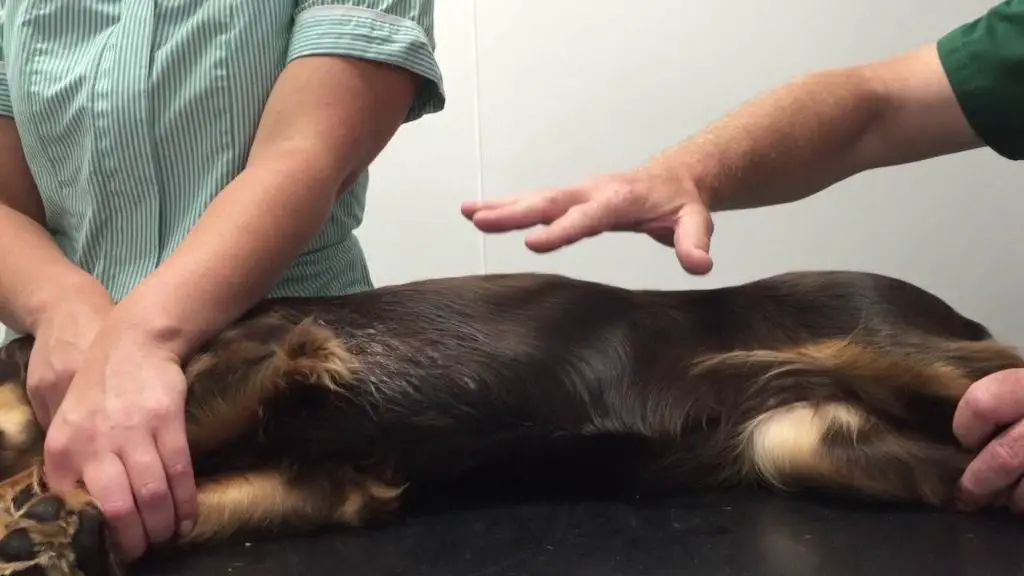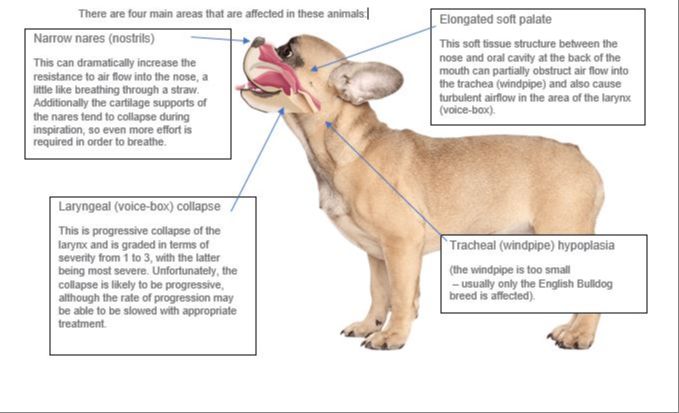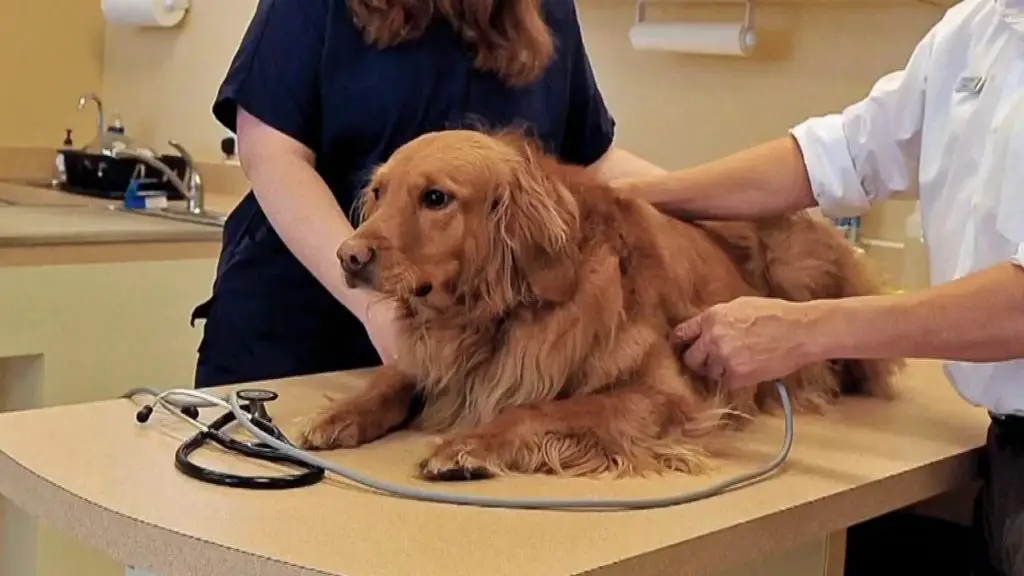Introduction
As a dog owner, you likely spend a lot of time observing your pet, including while he or she is sleeping. During this time, you may notice your dog’s breathing patterns and wonder if the sounds you hear are normal. It’s natural to want to ensure your four-legged friend is sleeping peacefully and not exhibiting any signs of respiratory distress. Understanding what to listen for while your dog is asleep will help put your mind at ease or alert you to a potential health issue that requires veterinary attention.
Normal Breathing Patterns in Dogs
Dogs generally have a normal respiratory rate between 15-30 breaths per minute when at rest. This can vary a bit depending on the dog’s size and breed. Small dogs and puppies typically breathe a bit faster than larger, adult dogs. The sound of normal breathing is usually quiet. You may hear a soft sighing or snoring noise as the dog inhales and exhales through their nose. Occasional deeper breaths, sniffing sounds, or panting if the dog is warm is also normal.

While sleeping, most dogs will have a slower, deeper breathing pattern. Long, deep breaths in and out at a steady rhythm are common. You may notice more sound on the inhale as the air passes through the nose and throat. The exhales are typically quiet. The chest expanding with inhales and contracting with exhales is visible. Some dogs will snore or make soft grunting sounds as they breathe in their sleep; this is usually normal.
Watching the rise and fall of your dog’s chest as they breathe at rest is a good way to monitor their breathing rate and depth. Count the number of chest expansions per minute to get the respiratory rate. A healthy breathing pattern should be calm and regular, without signs of effort or struggle.
When Breathing Noises Are Normal
Many dogs make normal breathing noises during sleep that aren’t cause for concern. Snoring, snorting, wheezing, grunting, and sighing are common occurrences, especially as dogs age. These noises happen as air passes through the throat and nasal passages. They often get louder as dogs go into deeper sleep.
Dogs naturally snore due to their elongated soft palates. Brachycephalic breeds like Pugs, Bulldogs, and Boston Terriers are notorious snorers because of their short muzzles. Older dogs also tend to snore more as muscles in the throat become relax. Snorting is similar to snoring but comes from short forceful breaths through the nose. This is also very normal.
Wheezing and grunting can happen when breathing out. These sounds usually mean there is some minor blockage or inflammation in the throat or airways. Small amounts of mucus, allergies, obesity, and anatomical differences can all cause wheezing. Sighing is a deep breath in followed by a long breath out, often while the dog is changing positions or waking up. These noises aren’t normally cause for alarm.
The key is to differentiate between normal sleeping noises and abnormal breathing patterns. Monitor when and how often noises occur. Speak to your vet if you have any concerns.
When to Be Concerned
While some dog breeds tend to breathe in a noisier way than others, you should never ignore signs of trouble breathing in your canine companion. If your dog shows any of the following signs of abnormal or strained breathing, it signals an urgent need to contact your veterinarian:

- Extreme difficulty breathing where your dog seems unable to get enough air
- Pronounced abdominal effort where there is exaggerated movement in the stomach/abdomen as your dog tries to breathe in and out
- Flared nostrils or panting even when your dog is at rest
- Breathing rhythm disturbances including gasping for air or intermittent breathing
- Labored breathing that involves your dog taking deep or heavy breaths
- Wheezing, crackling, gurgling, or whistling sounds with breathing
- Breathing that seems painful, causing yelping or whimpering
- Coughing and gagging that interrupts normal breathing patterns
- Extreme lethargy as your dog lacks oxygen and energy from troubled breathing
- Blue-tinged gums or tongue signaling insufficient oxygen
If you notice any signs of significant breathing struggles, don’t wait to see if it resolves on its own. Timely veterinary help is vital when a dog is having true breathing distress. Prolonged oxygen deprivation can risk organ damage and even death, so immediate attention is crucial.
Potential Causes of Abnormal Breathing
There are several potential medical causes that could lead to abnormal breathing noises or respiratory distress in dogs:
Allergies – Allergies to pollen, mold, dust mites or other environmental allergens can cause inflammation in a dog’s nasal passages or throat, leading to wheezing, coughing or labored breathing. Allergic reactions may occur seasonally or year-round.
Heart Conditions – Some types of heart disease like valve disease, arrhythmias or an enlarged heart can cause fluid buildup in or around the lungs. This results in noisy breathing sounds like crackles or wheezing as the dog struggles to get enough air.
Respiratory Infections – Bacterial or viral infections in the respiratory tract, such as kennel cough or pneumonia, involve inflammation and secretions that obstruct normal breathing. Dogs may have audible coughing, raspy breathing or shallow, rapid breathing.
Other less common causes could include narrowed airways, lung tumors, laryngeal paralysis, respiratory irritants or anxiety/stress. If your dog has breathing abnormalities, seek veterinary care to pinpoint the underlying cause and proper treatment.
Breeds Prone to Breathing Issues
Certain dog breeds are more susceptible to breathing issues, especially while sleeping. This is often due to the anatomy of their heads and airways. Some examples of breeds that commonly experience noisy breathing include:

Pugs
Pugs have very short snouts and nostrils, which can make it difficult for them to breathe properly. Their breathing is often loud and labored.
Bulldogs
Like Pugs, Bulldogs also have compressed snouts and narrow nostrils that restrict air flow. They are prone to snoring, snorting, and wheezing.
Boston Terriers
Boston Terriers have short, wide heads that cause airway restriction. Noisy breathing is common in this breed.
Shih Tzus
Shih Tzus have long, narrow snouts that can predispose them to airway obstruction. Breathing sounds like snorting or snoring are common.
French Bulldogs
French Bulldogs are brachycephalic with narrow nostrils and elongated soft palates that contribute to labored, noisy breathing.
There are other brachycephalic (short-nosed) breeds like Boxers, English Bulldogs, and Cavalier King Charles Spaniels that frequently experience breathing issues as well. If your dog is one of these breeds, it’s even more important to monitor their sleeping breathing patterns.
Tips for Monitoring Breathing
There are a few simple ways you can monitor your dog’s breathing and make sure everything sounds and looks normal:
- Watch the rise and fall of your dog’s chest as they breathe when they are resting or asleep. Their chest should move in a regular rhythm without straining.
- Notice if both sides of their chest expand equally with each breath. Uneven breathing could indicate a problem.
- Listen for any abnormal noises like wheezing, grunting, loud snoring or raspy panting.
- Feel their belly for any unusual movements like sucking in around their stomach.
- Check the color of their gums and tongue – they should be pink when healthy.
- Pay attention if your dog seems to be working harder to breathe – like nostrils flaring or breathing with an open mouth.
- Watch to see if they have any unusual breathing habits like stretching their neck to breathe.
Keeping an eye and ear out for changes in your dog’s normal breathing patterns is important. Contact your vet if you have any concerns.
When to See the Vet
While some breathing noises can be normal, it’s important to watch for signs of respiratory distress in your dog. Contact your veterinarian right away if you notice any of the following warning signs:
-
Noisy breathing that sounds strained or like gasping for air
-
Breathing that seems rapid or labored
-
Flared nostrils as your dog struggles to bring in air
-
A blue tinge to the tongue or gums, indicating lack of oxygen
-
Inability to lie down or relax due to breathing difficulty
-
Breathing with an open mouth or excessive panting
-
Coughing or gagging, sometimes producing foamy mucus
-
Breathing that seems to require effort from abdominal muscles
-
Breathing that causes the chest to expand more than usual
When you notice these signs, call your vet right away, even outside regular office hours. Difficulty breathing can quickly become life threatening for dogs if left untreated. Quick veterinary care can help provide relief and treat the underlying cause.
Treatment Options
If your dog is diagnosed with a breathing issue, the veterinarian will recommend a treatment plan based on the underlying cause. Some common options include:

Medications
Medicines may help open airways, reduce inflammation, or treat infections associated with breathing problems. For example, dogs with collapsing trachea may be prescribed bronchodilators, corticosteroids, or cough suppressants. Antibiotics can treat respiratory infections.
Surgery
Surgery is sometimes necessary to correct anatomical abnormalities causing breathing issues. For example, elongated soft palates can be trimmed, stenotic nares can be opened, and collapsing tracheas may benefit from stent placement. Surgery carries risks, so vets weigh benefits vs potential complications.
Lifestyle Changes
Making adjustments to your dog’s routine can help minimize episodes of labored breathing. This includes maintaining a healthy weight, avoiding triggers like humidity or allergens, using a harness instead of a collar, and giving short low-impact walks.
Supplemental Oxygen
Providing supplemental oxygen may help relieve breathing difficulties in some cases. This can be done on a temporary basis like an emergency oxygen mask, or more long-term via an at-home oxygen chamber or nasal cannula.
Conclusion
It’s normal to be able to hear your dog breathing lightly while sleeping. However, loud breathing, labored breathing, wheezing or other abnormal sounds can indicate an underlying health issue. Certain dog breeds like pugs and bulldogs are more prone to breathing problems due to the shape of their nose and throat. Breathing issues may also become more common in older dogs.
Keep an eye out for signs like nostril flaring, open mouth breathing or abdominal breathing. If you notice your dog is having trouble breathing, taking them to the vet right away is crucial. Breathing difficulties can quickly escalate into an emergency. With proper diagnosis, treatments like medication or surgery can often successfully improve breathing function. Don’t hesitate to get your dog medical attention if their breathing seems abnormal.
The bottom line is: audible breathing during sleep is generally nothing to worry about in healthy dogs. But any sudden changes or concerning noises should prompt a vet visit. Monitoring your dog’s patterns will help you identify when their breathing is problematic and in need of care.